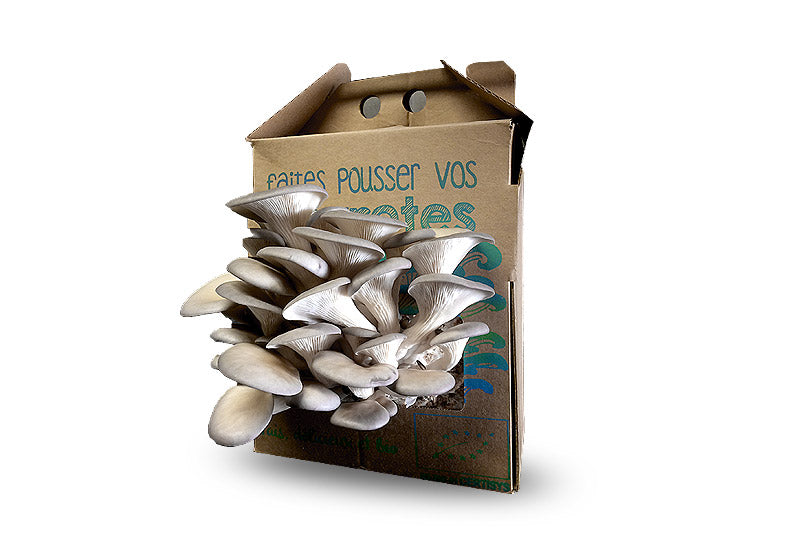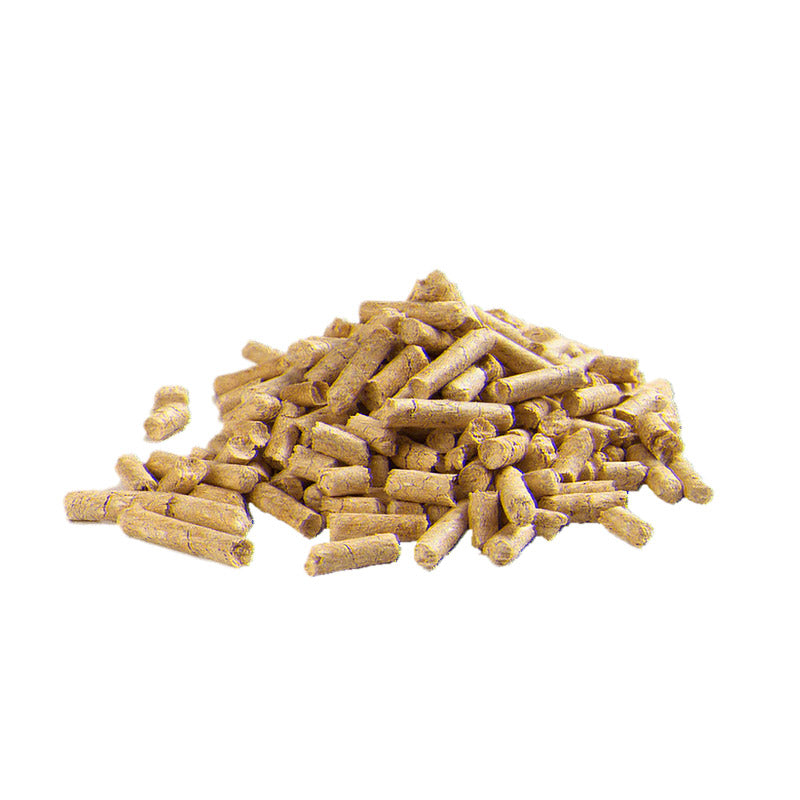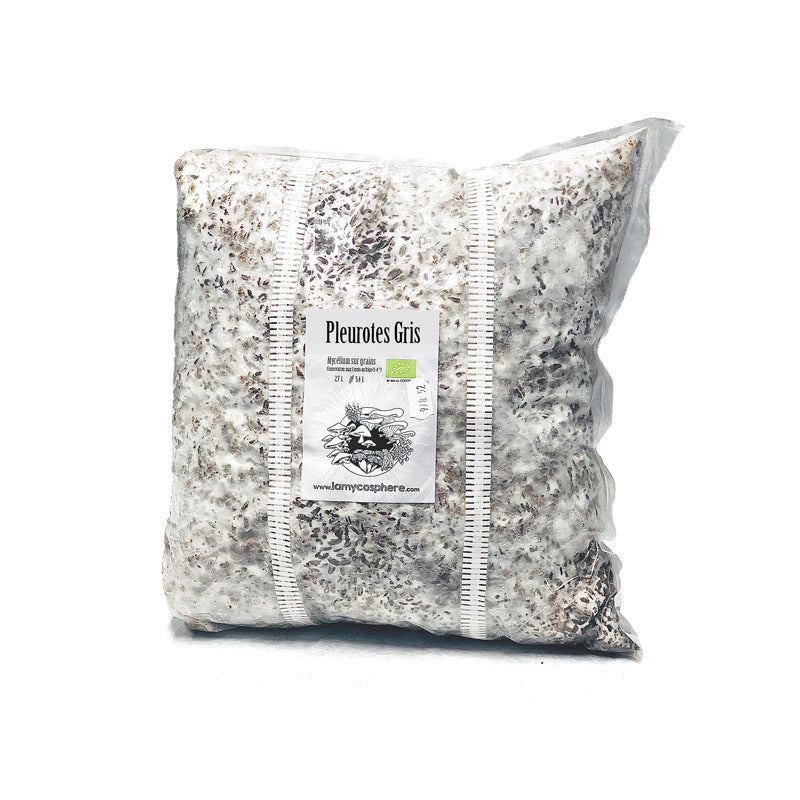Let's go!
If you have never grown mushrooms and want to cultivate them at home indoors, the easiest way is to start with Fruiting Block Ready-to-Grow.
To go further, you can produce your own substrates with our DIY kits, or use our grain myceliums.
For outdoor cultivation you can easily inoculate logs with our myceliums on plugs and mulches with our mycelium of stropharia.
Produce mushrooms
The products below will allow you to discover the necessary steps for mushroom production. We master the manufacturing process of each one and support you towards autonomy.

The Fruiting Block Ready-to-Grow (Harvest)
If you have never grown mushrooms, the easiest is to start with Kits or Fruiting Blocks Ready to Grow
The substrate is already colonized by mycelium and arrives ready to fruit. You just have to place it in a spot protected from drafts, with indirect light, maintain constant humidity, and harvest at the right time.
The most common varieties found in stores are Paris mushrooms, oyster mushrooms, and shiitakes. Most current mushroom farms actually operate by purchasing ready-to-grow substrates from specialized suppliers.
We provide culture Fruiting Blocks, the same ones we use for our own production. We also offer a slightly more aesthetically refined oyster mushroom kit with boxes that we screen print by hand.
By difficulty:
Level 1: Fruiting Blocks ready to grow Paris mushrooms, oyster mushrooms
Level 2: Fruiting Blocks ready to grow Shiitakes, Eryngis, and other varieties.
See all kits and Fruiting Blocks of oyster mushrooms

The Substrates (the food of mushrooms)
The substrate allows mushrooms to develop after being inoculated with grain mycelium.
Our pelletized substrate is optimized for the production of wood-growing mushrooms. We have studied the composition of the different ingredients to provide the mycelium with an optimal substrate in terms of carbon/nitrogen ratio, sugars, and minerals.
These substrates are generally pasteurized by heat or lime before being inoculated with mycelium and placed in bags, buckets, or other containers depending on the cultivation techniques.
We also offer the suitable culture bags. These are equipped with a micro-filter that allows the mycelium to breathe but prevents the entry of potential contaminants (mainly bacteria and molds).
With the DIY kit, we also offer everything you will need to make your own substrate in a single box.
To go a little further:
You can learn to make your own substrates.
You can then use local resources such as straw, wood sawdust, chips, logs, coffee grounds, etc.

Mycelium on Grain (Seeds)
Seed production is the most delicate step as it requires quite strict hygiene conditions. We produce our myceliums under laboratory conditions, which guarantees the quality and purity of our strains.
You can consult this page for more information: How to use our Myceliums
We produce our myceliums on grains of organic cereals. These cereals are an important source of sugars and nitrogen for the myceliums, which gives them good vigor for substrate colonization.
To go a little further:
You can learn to make "homemade mycelium" with some suitable equipment: pressure cooker, Bunsen burner, glove box, jars, disinfectant alcohol...
We provide you with mother cultures in the form of liquid cultures or in petri dishes .
